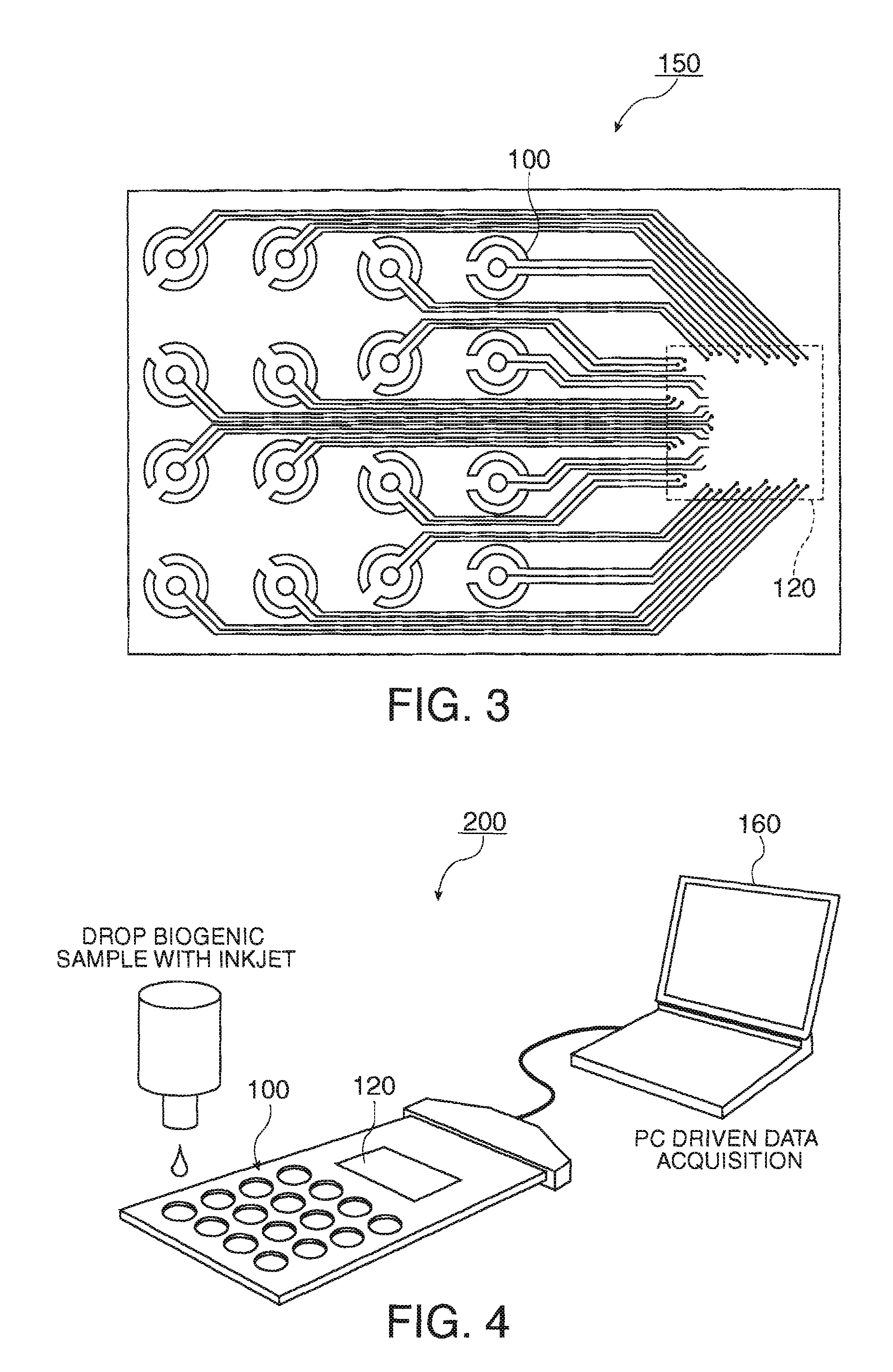Method for detecting or asssaying target material, and electrode substrate, device, and kit used for the same
a target material and electrode substrate technology, applied in the direction of material electrochemical variables, liquid/fluent solid measurements, instruments, etc., can solve the problems of inability to conduct detection, difficult control of the location and direction of biomolecules, etc., to improve the image quality of electrophoretic devices, high sensitivity, easy confirmation
- Summary
- Abstract
- Description
- Claims
- Application Information
AI Technical Summary
Benefits of technology
Problems solved by technology
Method used
Image
Examples
first embodiment
[0033]FIGS. 1A to 1D illustrate a flow indicating an outline of detection or assay of a target material according to the embodiment of the invention.
[0034] First Process: Metal Oxide Thin Film Formation
[0035] A metal oxide thin film 12 that contains a target material model 14 is formed on a electrode substrate 10, as shown in FIGS. 1A and 1B. The formation of the ultrathin film is desirably performed by a surface sol-gel approach that uses a metal alkoxide compound.
[0036] Here, the surface sol-gel approach indicates a system of chemically adsorbing a hydroxy group etc. on the electrode substrate 10 with the metal alkoxide compound, and thereafter hydrolyzing them, thereby forming a monomolecular metal oxide film immobilized on the substrate surface in a covalent bond and on the multilayer of the metal oxide film. More specifically, the electrode substrate that has a functional group such as a hydroxy group that is reactive to the metal alkoxide is dipped into a metal aloxide solu...
second embodiment
[0056] The electrode substrate according to the aspects of the invention and a device for target material detection and assay that is provided with the electrode substrate, will now be described as a second embodiment of the present invention.
[0057] On the surface of the electrode substrate, a thin film formed with metal oxide is formed, and on the thin film, the recess moiety into which the target material can engage is formed. In FIG. 1C, this electrode substrate is illustrated as the electrode substrate 10 on which the metal oxide thin film 12 is formed. On the metal oxide thin film 12, the recess 16 into which the target material can engage is formed. Such electrode substrate 10 excels in persistence and stability, compared to microarrays where the biogenic substance is immobilized, and can be distributed independently. The method for manufacturing the electrode substrate 10 is omitted since it is described in the section of the first embodiment.
[0058] As described, the electr...
third embodiment
[0065] A kit for target material detection and assay, according to the forth and fifth aspect of the invention, will now be described as a third embodiment of the present invention.
[0066] The kit in the third embodiment of the invention at least includes: an electrode substrate, a material that contains metal alkoxide compound for forming thin film on the electrode substrate, and redox reactive molecule. With such kit, users can select an arbitrary target material, and form the metal oxide thin film that contains the target material by using the metal alkoxide compound, on the surface of the electrode substrate. Thus the target material detection and assay may be appropriately performed using the above-mentioned electrode substrate. Here, it is suitable, as shown in FIG. 1, that the electrode substrate is provided to the kit as the detecting device 100 including the counter electrode 22 and the reference electrode 24. It is also suitable that the system 200 including a plurality of...
PUM
 Login to View More
Login to View More Abstract
Description
Claims
Application Information
 Login to View More
Login to View More - R&D
- Intellectual Property
- Life Sciences
- Materials
- Tech Scout
- Unparalleled Data Quality
- Higher Quality Content
- 60% Fewer Hallucinations
Browse by: Latest US Patents, China's latest patents, Technical Efficacy Thesaurus, Application Domain, Technology Topic, Popular Technical Reports.
© 2025 PatSnap. All rights reserved.Legal|Privacy policy|Modern Slavery Act Transparency Statement|Sitemap|About US| Contact US: help@patsnap.com



